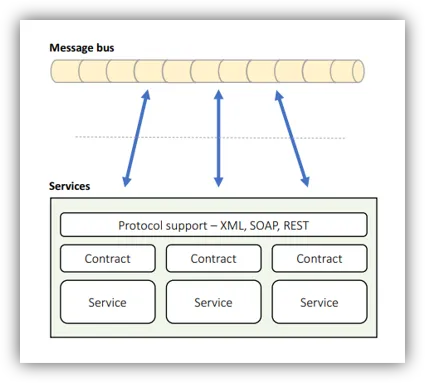Technology and patterns
Create Application Overview
- Determine application type
- Bot? Console? Service? Web? Desktop? Maybe Serverless?
- Identify deployment constraints
- Where are you going do deploy the application?
- Identify architecture pattern
- Layered? Component? Microservices?
- Determine technologies
- What technologies are available? Libraries? Third-party tools?
- A lot of factors play here… Choose wisely!
- Create your first diagram
Application Types
- Web application
- Best suited for:
- User interface
- User initiated actions
- Large scale
- Short, focused actions
- Request-Response based
- Best suited for:

- Web API
- Best suited for:
- Data retrieval and storage
- Client initiated actions
- Large scale
- Short, focused actions
- Usually REST based
- Returns data, not HTML
- Best suited for:
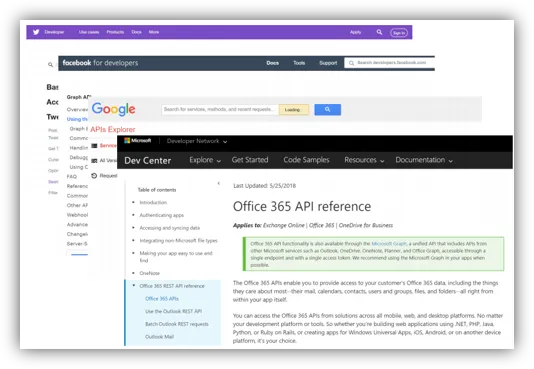
- Mobile Application
- Best suited for:
- Well, mobile devices
- User interaction (games, social apps)
- Front end for Web API
- Location & camera-based systems
- Usually work with a Web API
- Best suited for:
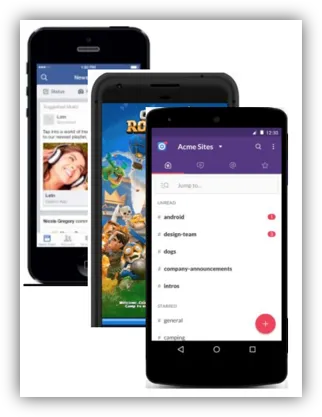
- Desktop Application
- Best suited for:
- User centric actions
- Gaming
- Has all its resources on the local PC
- Might connect to the web
- Great UI
- Best suited for:

- Console Application
- Best suited for:
- Long-running processes
- Short actions by trained power-users
- No fancy UI
- Require technical knowledge
- Limited interaction
- Long or short-running Processes
- Best suited for:
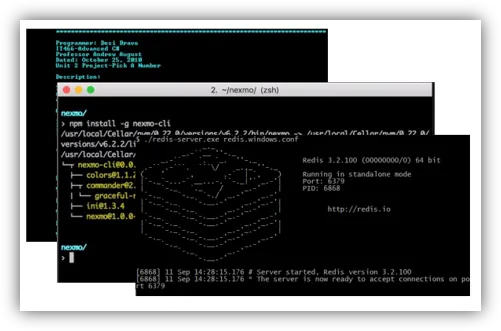
- Service
- Best suited for:
- Long-running processes
- No UI at all
- Managed by the OS service manager
- Best suited for:

Selecting technology stack
- This is a super important decision (especially if you are a consultant)
- Mostly because it is almost irreversible
- And developers get emotional to their favorite tools
- The decision must be:
- Made with a clear mind, heavily documented and based on a group effort
- Main considerations besides performing the task:
- Community – check Stack Overflow
- Popularity – check Google Trends
- Current developer skills – unknown technologies produce delay and low quality
- Deadline – advanced technologies take more time
- Support – developers should develop, be careful with shiny new tools
- Products – use external and existing tools but always estimate the cost
General tips and tricks
- Do not choose on recommendation
- Or marketing tricks from vendors
- Always do a CBA and ROI (or at least a pros/cons list)
- Which type system – static or dynamic?
- What is our infrastructure?
- Is the community using the tool?
- Is performance critical?
- Do we need to analyze the learning curve?
- Can you easily hire a new team member?
- Stay rational and don’t argue with your colleagues!
- Use the right tool for the job!
- And not vice-versa!
Popular technologies
- Web applications – back-end
- Mature - .NET, Java, PHP
- Newer - Node.js, Python, .NET Core, Go
- Serverless – Amazon Lambda, Azure Functions
- Web applications – front-end
- HTML, CSS & JavaScript (or maybe Web Assembly, if you are adventurous)
- Which JavaScript framework? Angular? React? Vue? Svelte?
- Mobile applications
- Native? Hybrid? Cross-Platform?
- The battle is development time versus capabilities
- Desktop applications
- WinForms, WPF, UWP
Database technologies
- Key-value
- Useful for cache, publish/subscribe, leaderboards
- Not your primary database
- Redis, Memcached
- Wide column
- Each key has multiple columns without a schema
- Cannot do joins and scales easily
- Useful for time-series (IoT), historical records, high-write/low-read scenarios
- Not your primary database
- Cassandra, HBase
- Document
- Each document is a container for key-value pairs
- Fields can be indexed
- Columns can be collection – query relational data without joins
- Reading data is usually super fast, but writing data tends to be more complex
- General purpose – applications, games, IoT, content-management
- If you have unstructured data – a document database is a great start
- No standard language for queries
- Not suitable for huge graphs of data – social networks, for example
- MongoDB, Firestore, DynamoDB, CouchDB
- Relational
- Tables are connected through relationships
- Requires a schema
- ACID compliant – atomicity, consistency, isolation, durability
- Good for stable data
- More difficult to scale
- Supports SQL – a query language
- General purpose - perfect for most applications which does not have unstructured data
- Some databases support JSON columns
- MySQL, PostgreSQL, SQL Server
- Modern databases like CockroachDB – designed for scale
- Graph
- Data is represented as nodes
- Relationships between the nodes are edges
- Instead of many-to-many tables, you have direct connections
- Languages like SQL
- Better performance than relational databases when datasets are large
- Useful for – recommendation engines and well… graphs
- Neo4j, CosmosDB
- Search engine
- Full-text search engine
- Like document databases but under the hood all the text is indexed
- Works like an index at the back of a book
- Can easily rank results
- Useful for search engines and typeahead scenarios
- Elasticsearch, Algolia, MeiliSearch
- Multi-model
- You do not think about data modeling, schemas, shards, replications
- You describe how you want to use the data with GraphQL
- It chooses the database type behind the scenes
- ACID compliant, extremely fast and you do not care about provisioning infrastructure
- Useful for… everything?
- But is it mature enough?
- FaunaDB
Cloud Technology

Other Important Technologies
- Web servers: Nginx & Apache
- Containers & orchestrators: Docker & Kubernetes
- Message brokers: RabbitMQ & Kafka
- Logging
- ELK Stack – Elasticsearch, Logstash, Kibana
- CDN
Identify Key Issues
- Quality attributes:
- System, run-time, design, user
- Performance, stability, manageability, configurability, etc.
- System wide concerns:
- Authentication & authorization
- Caching
- Communication
- Configuration management
- Logging & exception management
- Validation
Create Candidate Solution
- Create a Baseline architecture
- Create a Candidate architecture
- Develop Architectural Spikes
- Proof of concept projects to validate unknown concepts
- Create Activity, Sequence, State, and Component Diagrams
- Create Class Diagram if needed
- They are too low-level
- Document only the most important classes
- Everything else should be done by the Lead Developer
During Each Cycle
- Do not introduce new risk
- Do not introduce untested technologies and concepts
- Mitigate more risk than baseline
- Each cycle should reduce the risk
- Meet additional requirements
- Cover more and more requirements until you meet them all
- Enable more key scenarios
- Address more key issues
- Start communicating architecture when you exceed 50% coverage
- If you have the feeling you are half done, invite the developers
- You don’t want to be the bottleneck
Architecture design patterns
-
Client/Server Pattern
- Distinct client and server
- Separated by network
- Communication protocol
- Many clients, one server
- Pros:
- Secure & Simple
- Centralized Control
- Easy to manage
- Cons:
- Requires network, difficult to scale
- Single point of failure

-
Layered Pattern
- Strict areas of concern
- Layers may only communicate with peers above/below
- Pros:
- High abstraction & High isolation
- Structured communication
- Easy to scale out
- Cons:
- Deep call chains
- Can hide complexity
- May harm performance
- Lowest layer must cover all use cases
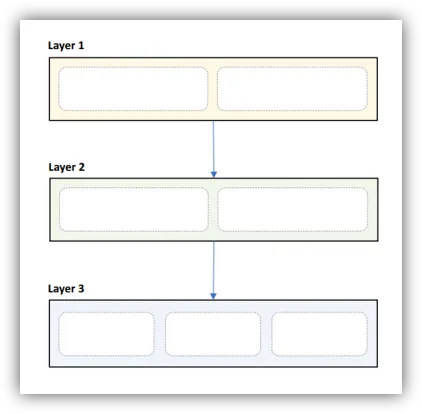
-
N-Tier Pattern
- Layers deployed to servers
- Usually - 3 tiers, always start with them
- Communication between layers uses network
- Pros:
- High abstraction & High isolation
- Structured communication
- Easy to scale out
- Cons:
- Network = point of failure
- Network may be slow
- Coarse interfaces
- Hard to debug
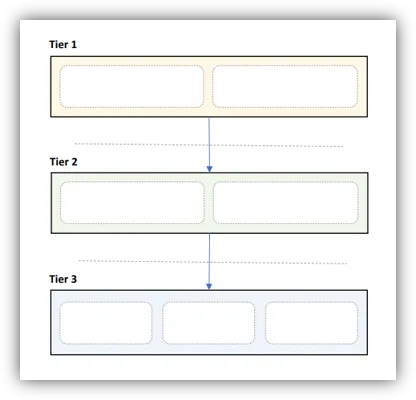
-
Component-based Pattern
- Components are modular building blocks of software
- Grouped into areas of concern
- Clearly described interfaces
- Containers provide additional services
- Pros:
- Easy deployment & Allows 3rd party tools
- Promotes modularity & Few unanticipated interactions
- Cons:
- Coarse building blocks & Can be expensive
- Initialization may be slow & Harder to develop & maintain
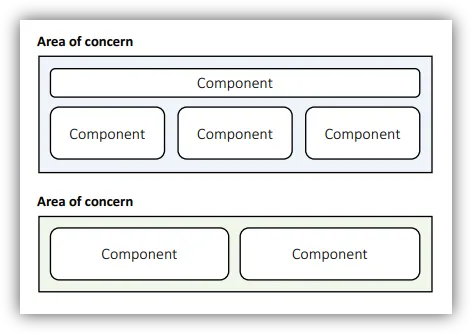
-
Object-Oriented Pattern
- Uses classes
- Grouped into areas of concern
- Describes public members
- Uses inheritance, composition, aggregation, and associations
- Pros:
- Easy to understand & Promotes reuse
- Easy to test & debug & Highly cohesive
- Cons:
- Inheritance hard to get right & Useful only if you do not have a Lead Developer
- Many unanticipated communications & Too detailed
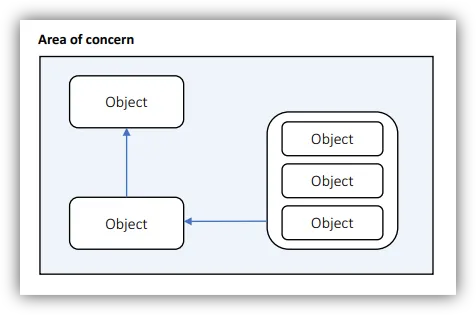
-
MVC Pattern
- Designed for presentation layers
- View handles output
- Model handles data
- Controller handles interaction
- Pros:
- Strict separation of concerns
- Scales well
- Cons:
- High overhead
- Scattered code
- Hard to data-bind
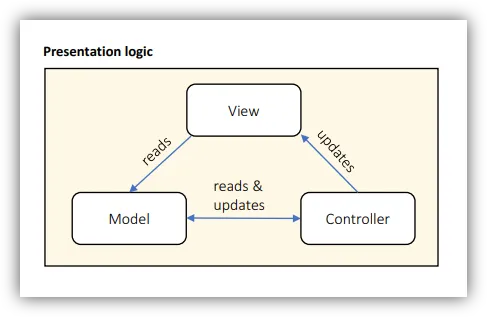
-
MVVM Pattern
- Derived from MVC pattern
- View handles output
- Model handles data
- View Model is binding source
- Pros:
- Strict separation of concerns & Scales well
- Easy to data-bind
- Cons:
- High overhead
- Scattered code
- Controller not separated
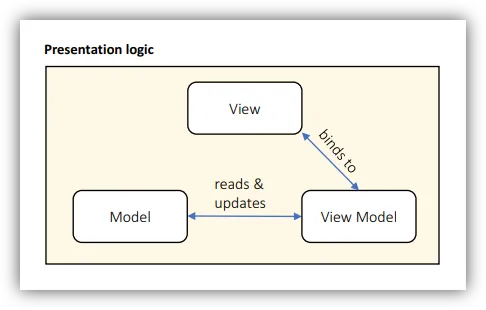
-
Service-Oriented Pattern
- Discrete business services
- Use network to communicate - HTTP, XML, SOAP, Binary…
- Pros:
- Business domain alignment & High abstraction
- Discoverable, resilient, Allows 3rd party libraries & Cross-platform
- Cons:
- Clients must handle slow, offline network
- Coarse interfaces
- May harm performance
- Security issues
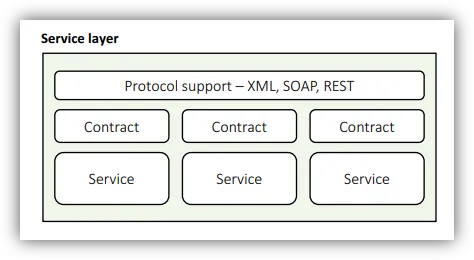
-
Microservice Pattern
- Services calling services
- Can use fast private network and RPC
- Deployed on multiple servers
- Pros:
- Modular & Reduced abstraction
- Discoverable, resilient & Less coarse interfaces
- Can use fast network
- Cons:
- Must cope with slow, offline network
- More unanticipated communications
- Hard to do transactions & Hard to test, debug, deploy

-
Message Bus Pattern
- Services connected to shared data bus
- Uses messages for communication
- Supports discovery, failover
- Pros:
- Easy to extend & Simple communication
- Very flexible & Easy to scale
- Easy discovery, failover
- Cons:
- Bus = single point of failure
- Coarse communications
- Can be slow & Hard to test, debug
